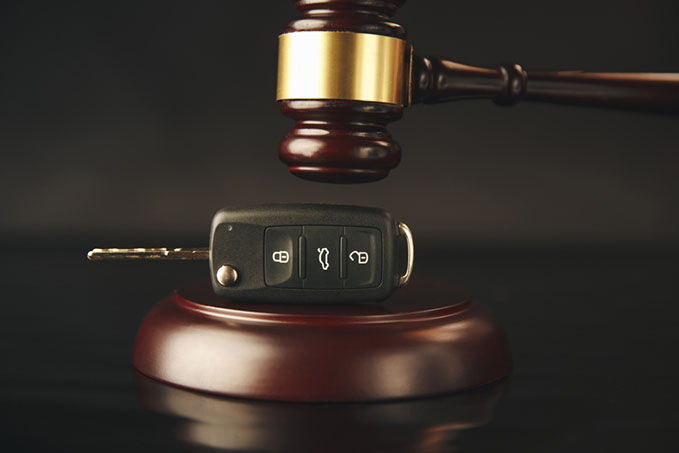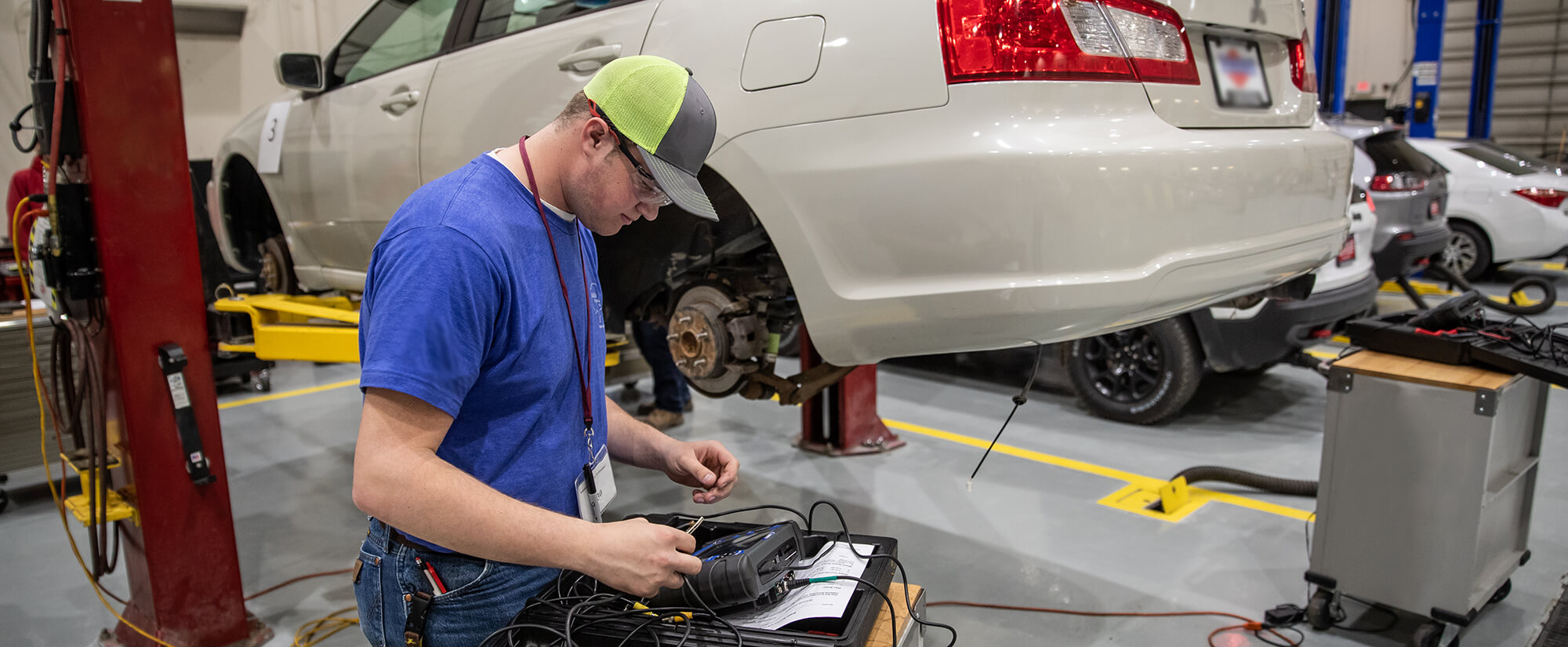
There are many things you should know about car battery maintenance. Here are the steps to check your battery. Keep the battery's terminals clean and avoid using baking soda. This can lead to corrosion. Clean the battery's case, and check the date code. Avoid excessive heat. You should also drive your car at least three days per week in order to maintain its condition. While this may take some extra time, it's worth it.
Clean battery terminals
Before cleaning the battery terminals, you need to disconnect the cables between the positive and negative battery posts. You can loosen the positive and negative clamps individually. Some battery cables attach to top or side posts using bolts. Extra corrosion or corroded connections may require special tools or metal pliers. Make sure to clean all terminals thoroughly before connecting them again. Apply a protective grease or petroleum jelly to the terminals after cleaning.
To remove corrosion, you can use a solution of baking powder and water to dissolve it. The solution should not be too concentrated and should remove any heavy corrosion. Alternatively, you can use a specialized battery terminal cleaner which can be applied with a brush. This type of cleaner is often aerosolized and can be used on battery cables as well. Using this method, it is advisable to wear protective gloves while performing this task.

Avoid extreme heat
Avoid excessive heat to prolong the life of your car's battery. If you want to prolong the life of your car battery, avoid excessive heat. Instead, keep it charged and store it in a cool location. In hot weather it is a good idea wash the battery and to test it frequently. Higher electrolyte-to lead ratios are better for batteries made for warmer climates.
Excessive heat can also cause corrosion inside the battery. This corrosion can cause the battery to lose its ability to charge and may result in malfunctioning charging system components. Excessive heat will eventually destroy your car's batteries. Corrosion can also be accelerated when hot batteries are used. This can reduce the battery's lifespan and decrease its capacity. It is best to inspect the battery every so often to ensure that there aren't any signs of corrosion.
Clean battery case
Cleaning the battery case is one of the most important things you can do to ensure your car battery stays in good shape. A dirty battery case can cause a variety of problems, including premature drain and cracks or leaks. This can hide other damage like bulges or freezing. Keeping your battery case clean will extend its life significantly. Here are some ways you can keep your battery's case in tip top shape.
You can remove any traces of corrosion by using a wire brush or an older toothbrush. As this could lead to corrosion, you should avoid removing any lead from the terminals. Next, rinse the case with water. Dry it with a rag. A cleaning solution can be used if the case has any residue. Petroleum jelly or any other protective coating can be applied to the case once it is clean.

Date code
Check the date code on your car's battery for instructions on how to maintain it. A warranty on batteries will tell you when they should be changed. The date code is found on the top of the battery and represents a two-digit number and a letter. The number is the month and the year that the battery will expire. If the code indicates "A" and "B", it is important to replace the battery before the warranty expires.
Depending on the manufacturer of the battery, there may be different date codes. Some batteries indicate the date of manufacture, while others have an "inservice” date. It can be difficult to understand the battery date. If the date code for the battery reads "2014", this means that it was manufactured December 2014. Manufacturers also put the date on the battery to calculate the warranty expiration date. You can still use your battery if it is less than 2 years old, but it may not be as efficient as it was when new.
FAQ
How long is an automotive course?
A course in automotive lasts three years.
The first year of your training is devoted to theory. You will learn all about cars. The second year will be spent in practical training. Here you will learn how fix engines, drive and other mechanic jobs. You will spend the final year working in a local garage to gain real-world experience.
What is the length of an apprenticeship as an automotive mechanic?
A three-year apprenticeship in automotive mechanics takes. This includes two year at school as well as two years as an apprenticeship. The first year teaches you all aspects, from theory to practical skills and safety procedures. During this time, you'll also learn how to use tools safely and efficiently. After the first year, a second year will be spent on-thejob training. This year you'll get experience in different trades. These years will offer you the opportunity to attend formal classes.
The final year of the program is spent gaining qualifications and becoming certified in the field. These include NVQs or National Vocational Qualifications. These are earned after passing exams that cover specific topics in the industry. The HNCs (Higher National Certificates), on the other hand, cover general subjects like customer service and management. City & Guilds certificates can be obtained for individuals who want to learn certain trades.
How can I prepare to become a mechanic apprentice?
Understanding what you're getting into is crucial. You need to understand the mechanics of cars and how they work. This will help you to plan your first day in the garage.
You should also know how to fix common problems such as tires or broken lights.
This will teach you how to diagnose problems and fix them yourself.
To put the pieces back together, you will also need to understand how they fit together.
Finally, be proficient in using tools safely and efficiently.
These things will enable you to be a competent mechanic.
Is it hard to get work as an auto mechanic?
Yes, it is possible. Many garages list their vacancies online. Many people simply apply for the fun of it. Try applying to a few jobs and seeing if the garages accept student applications. You could also ask your family and friends if they know anyone in the industry. They may be happy and willing to recommend someone.
Is being an auto mechanic a promising career choice?
There are many exciting opportunities in the automotive industry for people who are driven to achieve excellence. This field requires hard work and the willingness to learn from others.
Excellent communication skills are essential as you will spend most of the time speaking to customers or other employees. You must also be willing and able to travel long distances, which can make it difficult to commute.
You can take classes at universities and community colleges if you are interested in a career as an automotive technician. Many schools have programs that are specifically tailored for students who are interested in automotive sales, repair, and customer service.
Studying mechanical engineering is an option if you're interested in pursuing a degree. It's possible to get a bachelor's degree in just four years.
In addition, many companies will hire graduates straight out of school. You should start looking for employment as soon as you are able to continue your studies part-time.
After you have completed your education, you will likely need some training to be able to work as an automotive technician.
This means you'll need to pass exams such as the Automotive Service Excellence (ASE) certification exam. This test covers topics such engine maintenance as brakes, steering, suspension, etc.
After passing the ASE test you can apply for a National Institute for Automotive Service Excellence (NIASE) license.
You can repair vehicles owned by private citizens with a license. In exchange, you'll receive compensation based on the number of services performed.
Not all states require licensing. If you intend to work in another state, however, you will need a license.
Some states don’t issue licenses until a certain amount has been completed. This could be you.
Statistics
- According to the BLS, total auto technician employment is expected to exceed 705,000 by 2030. (uti.edu)
- There were 749,900 jobs available for automotive service technicians and mechanics in 2016, which is expected to grow by six percent through 2026. (jobhero.com)
- 52% of Mechanics in the United States think their salaries are enough for the cost of living in their area. (indeed.com)
External Links
How To
How to diagnose your vehicle properly for repair
First, look at the symptoms of your car to determine if it needs repair. Follow these steps to properly diagnose your vehicle.
-
Check engine lights. Inspect the dashboard light indicators. These include the engine lights, the oil pressure gauge and the battery light indicators. The RPM gauge and coolant temperature gauge should also be checked. If they have been flashing for more days than usual, it could be a sign that something is wrong with the vehicle.
-
Inspect the tire treads. Tires can become worn and cause problems in handling and braking. Also, inspect the treads of your wheels. You should ensure that they are clean and smooth. To do this, remove the wheels and take them out. To check the condition of your treads, use a flashlight.
-
Check the level of brake fluid. Keep track of the brake fluid level in your vehicle. This ensures that your brakes work properly. If the brake fluid level is low, your brakes might fail when you apply pressure to them.
-
The suspension system should be tested. Vehicles usually have a suspension system that helps absorb shocks and vibrations while driving. This suspension system provides greater control and smoother acceleration and deceleration. It might feel uncontrollable or wobbly if your vehicle is suffering from a suspension problem. You can test if your vehicle has a suspension problem by putting weight on either the front or back axle to see how it moves.
-
Take a look at the steering column. Steering columns are used to connect the steering wheel to the rest of the vehicle's components. The steering column can often be damaged by an accident. Replace it if your steering column feels loose or unsteady.
-
Pay attention to the exhaust pipe. The exhaust pipes are responsible for moving gases from the combustion chamber into the atmosphere. Exhaust pipes that are cracked or leaking can allow harmful fumes to enter your cabin. You should also fix any bent tailpipes immediately.
-
Look under the hood. Check under your hood for any unusual or missing components. Your engine could be leaking fluids. A professional technician should be contacted if your engine compartment emits an unusual smell.
-
Check the air filter. The air filter in your vehicle collects dirt and dust from the environment. Vehicles that have a dirty air filter will not run well. Replace your air filter regularly.
-
Check the fan belt. The fan belt that connects your vehicle to the transmission is called the engine fan belt. The engine will not turn if the fan belt breaks. The process of replacing the belt is straightforward. You will need a screwdriver, pliers and a pair of pliers.
-
Verify the radiator hoses. The radiatorhose carries water from your radiator to the engine. If the hose becomes damaged or cracked, hot liquid can be emitted onto the engine. To repair the leaky hose, all you need is a pair if needle-nosepliers.
-
Be sure to inspect your windshield wipers. Windshield wipers use electricity to clean away snow and rain. If they stop working, they could leave streaks on your window glass. To fix the problem, simply change the washer fluid.
-
The battery cables should be checked. The battery cables supply power to your car's electrical systems. Make sure you disconnect the negative cable before replacing batteries. Failure to do so can damage your alternator.
-
You should check the headlights. Headlights help you see the road ahead. If they don't work properly, it can cause poor visibility. Inspect the bulbs for signs of burnt out.
-
Make sure you have your lights on. If you approach other drivers at night, lights will warn them. If one doesn't work, it could distract you and lead to an accident.
-
You should inspect your brakes. Before you have a collision, brakes slow down your car. You may lose control of your vehicle and crash if the brakes don't function properly.
-
Change the oil. The oilkeeps your engine lubricated. It helps prevent metal parts from wearing out too quickly. It is recommended that the oil be changed every other month.